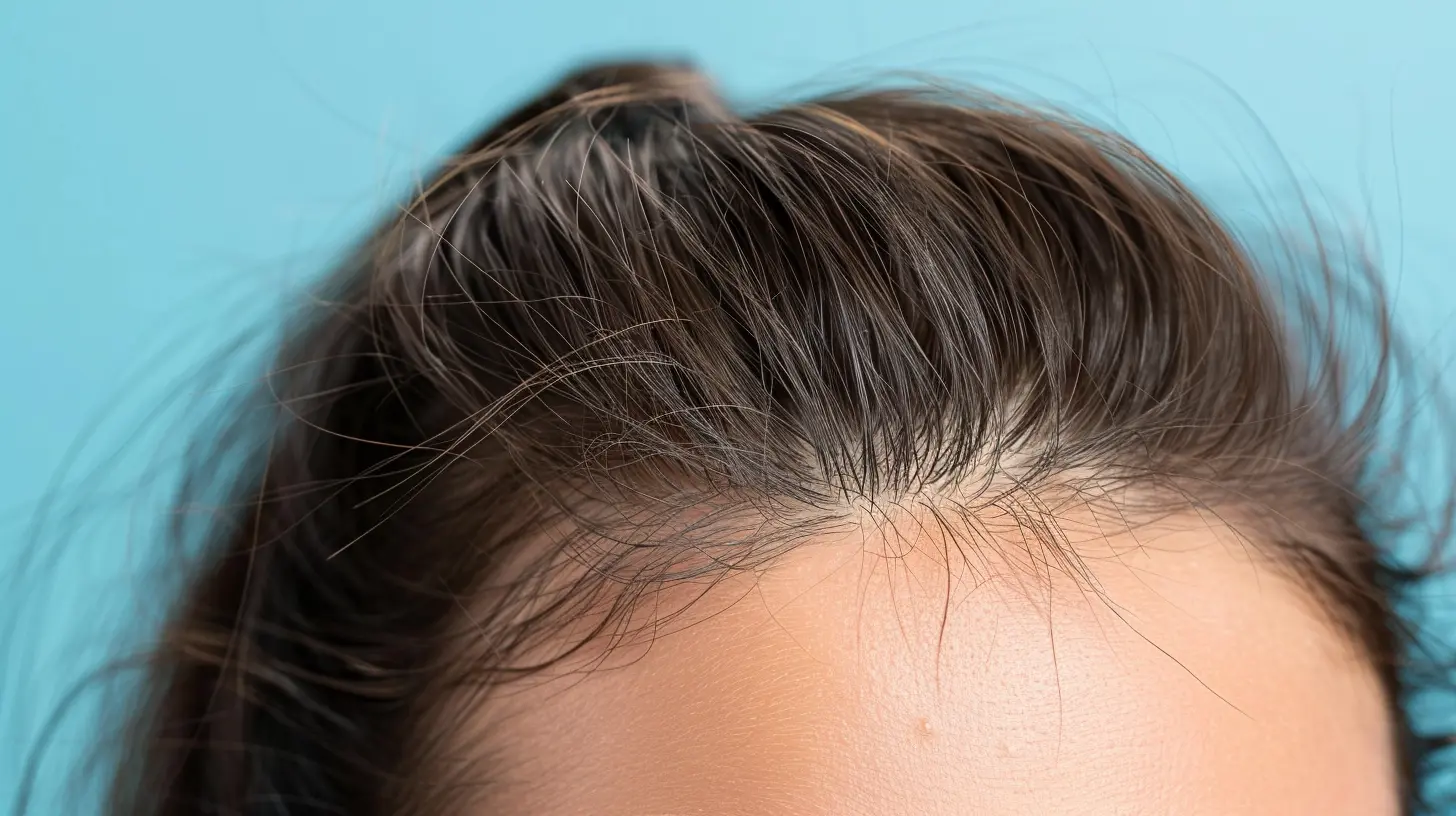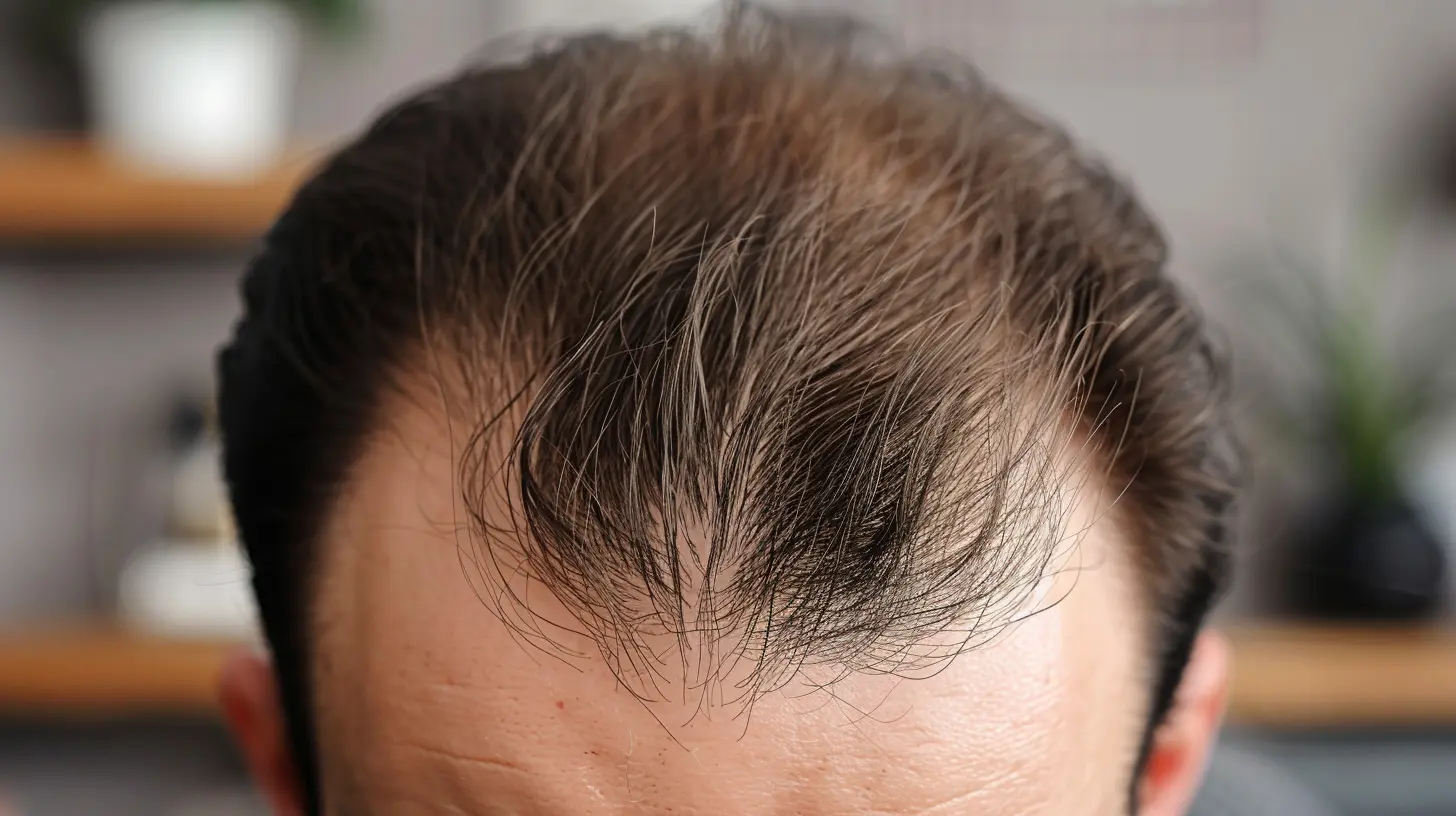Effective Ways to Combat Hair Thinning
22 September 2025
Hair thinning can feel like one of life’s cruel jokes, right? One day, you're running your fingers through your luscious locks, and the next thing you know, your strands are taking up permanent residence in your hairbrush, or worse – on the shower floor! But hey, that's why you're here: to figure out how to combat this problem before it feels like you're losing the battle entirely.
Don't stress yourself out, though (seriously, stress makes it worse!). In this article, I’m going to break down some tried-and-true, practical ways to tackle hair thinning head-on. Whether you're dealing with temporary shedding or more persistent thinning, there’s hope—and I’m here to guide you through it. 
What Causes Hair Thinning in the First Place?
First things first, let's get this straight: hair thinning doesn’t necessarily mean you’re going bald. Thinning hair just means your hair density is decreasing, or the strands are becoming weaker over time. But why does it happen?Here are some common culprits:
- Genetics: If your parents or grandparents had thinning hair, chances are it’s in your DNA too. Yep, thanks for the gift, ancestors.
- Hormonal Changes: Pregnancy, menopause, or conditions like PCOS can throw your hormones out of whack and mess with your hair growth cycle.
- Stress: Ever notice your hair shedding more after a super stressful situation? That's because stress can literally put your hair follicles into “sleep mode.”
- Nutritional Deficiencies: Your hair needs all the nutrients it can get to thrive. Lack of iron, zinc, Vitamin D, or biotin? Say hello to thinning hair.
- Hairstyling Habits: Tight ponytails, harsh chemicals, and excessive heat styling are a recipe for hair disaster.
- Medical Conditions and Medications: Thyroid issues, autoimmune diseases, or certain medications can affect hair growth.
Now that we’ve diagnosed the "why," let’s focus on the "how"—as in, how to stop hair thinning in its tracks. 
1. Keep Your Scalp Happy and Healthy
Think of your scalp as the soil in which your hair grows. If the soil isn’t healthy, how can you expect your hair to thrive?- Massage It Out: Spending just 5 minutes massaging your scalp daily can work wonders. It boosts blood circulation, which encourages those hair follicles to wake up and grow! Bonus tip: Use oils like coconut, argan, or castor oil while massaging for added nourishment.
- Use a Gentle Shampoo: Sulfates and parabens in shampoos can strip your scalp of its natural oils. Opt for a sulfate-free, gentle formula instead.
- Exfoliate Your Scalp: Yep, just like your skin, your scalp needs exfoliation too. Try a scalp scrub (or even DIY one with sugar and essential oils) to remove buildup and dead skin cells. 
2. Nourish Your Hair from the Inside Out
You know what they say: you are what you eat! Your hair feeds on nutrients, so if your diet is lacking, your hair might be too.- Protein is Key: Hair is made of keratin, a type of protein. Add eggs, fish, lean meats, and legumes to your plate to give your hair the building blocks it needs.
- Don’t Forget the Iron: Iron boosts blood circulation to your scalp, which keeps the hair roots strong. Load up on spinach, lentils, and red meat.
- Get Your Vitamins: Vitamin D (hello, sunlight!), biotin, and zinc are all critical for hair growth. Consider supplements if your diet doesn’t cut it, but always consult your doctor first. 
3. Break Up With Bad Hair Habits
Let’s be honest—we've all committed some hair sins in the pursuit of that perfect Insta-worthy look. But if you want thicker, healthier hair, it’s time to repent.- Ditch the Tight Hairstyles: Styles like ponytails, buns, or braids that tug on your scalp can cause traction alopecia over time. Opt for looser styles instead.
- Turn Down the Heat: Hot tools like straighteners and curling irons may give you that perfect style, but too much heat can weaken your strands. Use a heat protectant spray, or better yet, embrace your natural texture.
- Say No to Overwashing: Washing your hair every day can strip it of its natural oils. Aim for 2-3 washes per week unless you’re sweating up a storm.
4. Use Hair-Thickening Products
Sometimes, a little help from the beauty aisle is all you need to give your hair a boost.- Volumizing Shampoos and Conditioners: Look for products labeled "thickening" or "volumizing." They coat your strands with ingredients that add texture and make your hair appear fuller.
- Minoxidil: This over-the-counter treatment is one of the only FDA-approved solutions for hair regrowth. It doesn’t work for everyone, but for many, it’s a game-changer.
- Natural Remedies: Essential oils like rosemary and peppermint are believed to stimulate hair growth. Mix a few drops into your shampoo or carrier oil and massage it into your scalp.
5. Mind Your Stress Levels
Stress is like kryptonite for your hair. Seriously, no one wants a bald spot and a headache from overthinking, right?- Try Relaxation Techniques: Whether it’s yoga, meditation, or just curling up with a good book, find what works for you to kick stress to the curb.
- Get Moving: Exercise not only boosts your mood but also improves blood flow to your scalp. Double win!
- Prioritize Sleep: Your body (and hair) repairs itself while you sleep. Aim for 7-8 hours a night to keep everything functioning smoothly.
6. Seek Professional Help When Needed
Still not seeing results? It might be time to call in the pros.- Visit a Dermatologist: A dermatologist can run tests to determine the root cause of your hair thinning (pun intended) and suggest treatments like PRP therapy or prescription medications.
- Hair Transplants: If your hair loss is severe and other treatments haven’t worked, this could be a more permanent solution worth exploring.
7. Stay Consistent and Be Patient
Here’s the thing: hair regrowth takes time. Like, a lot of time. We're talking months before you start to see real changes. Don’t get discouraged if progress feels slow—good things take time.Stick to your routine, stay consistent with the steps above, and remind yourself that even small improvements are worth celebrating.
Conclusion
Dealing with hair thinning can be frustrating and, let’s be real, a little demoralizing. But remember: you’re not alone, and there are plenty of ways to take control of the situation. Whether you’re switching up your diet, ditching bad habits, or exploring professional treatments, every step you take brings you closer to achieving the thicker, healthier hair you deserve.At the end of the day, your hair is just one part of what makes you, you. Own it, rock it, and don’t let a little thinning shake your confidence.
all images in this post were generated using AI tools
Category:
Healthy HairAuthor:

Sophia Wyatt
Discussion
rate this article
1 comments
Kael McIlroy
Great tips! Incorporating a balanced diet and managing stress can significantly enhance hair health and minimize thinning.
October 1, 2025 at 2:34 AM

Sophia Wyatt
Thank you! I'm glad you found the tips helpful. A balanced diet and stress management are indeed key for healthy hair.


